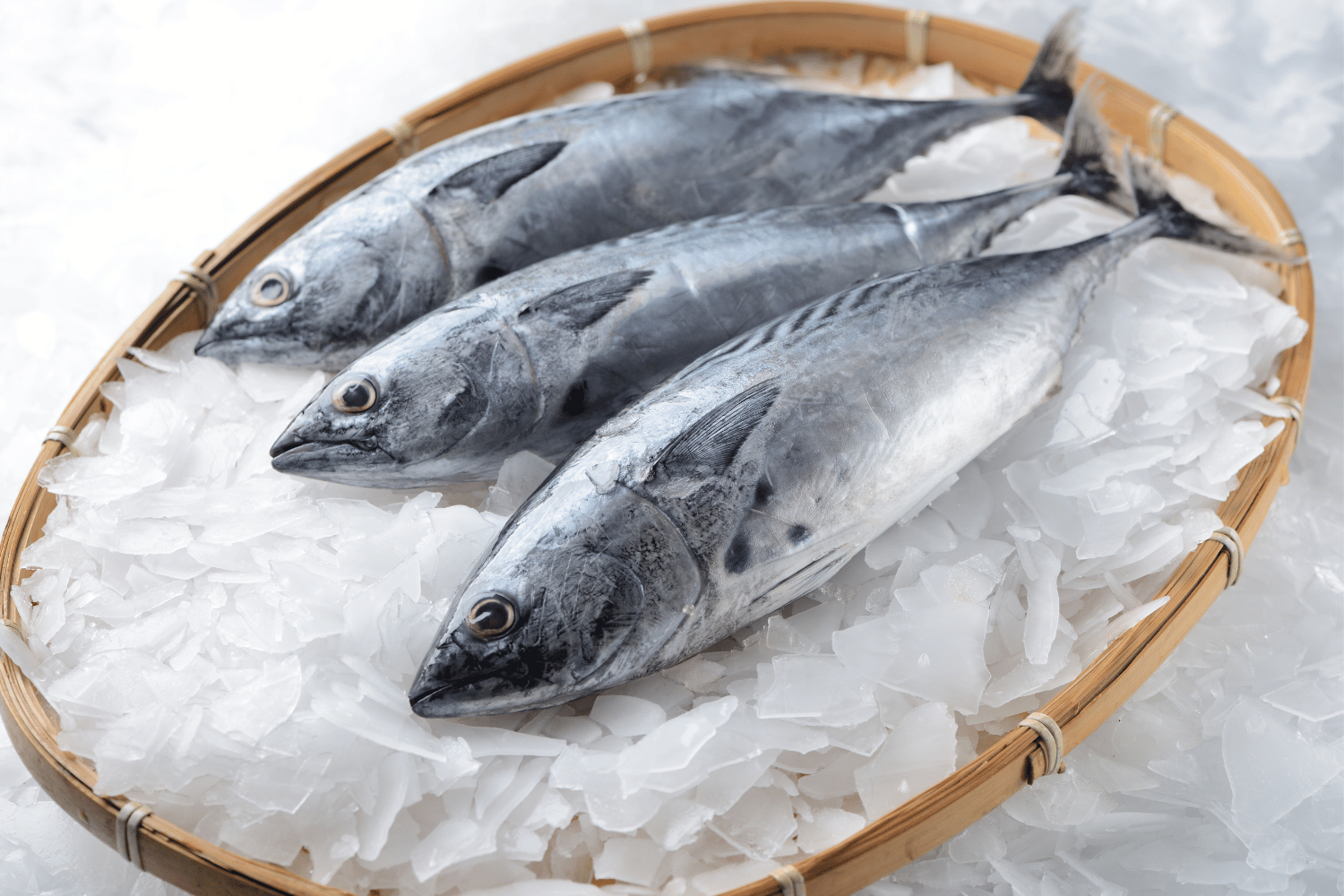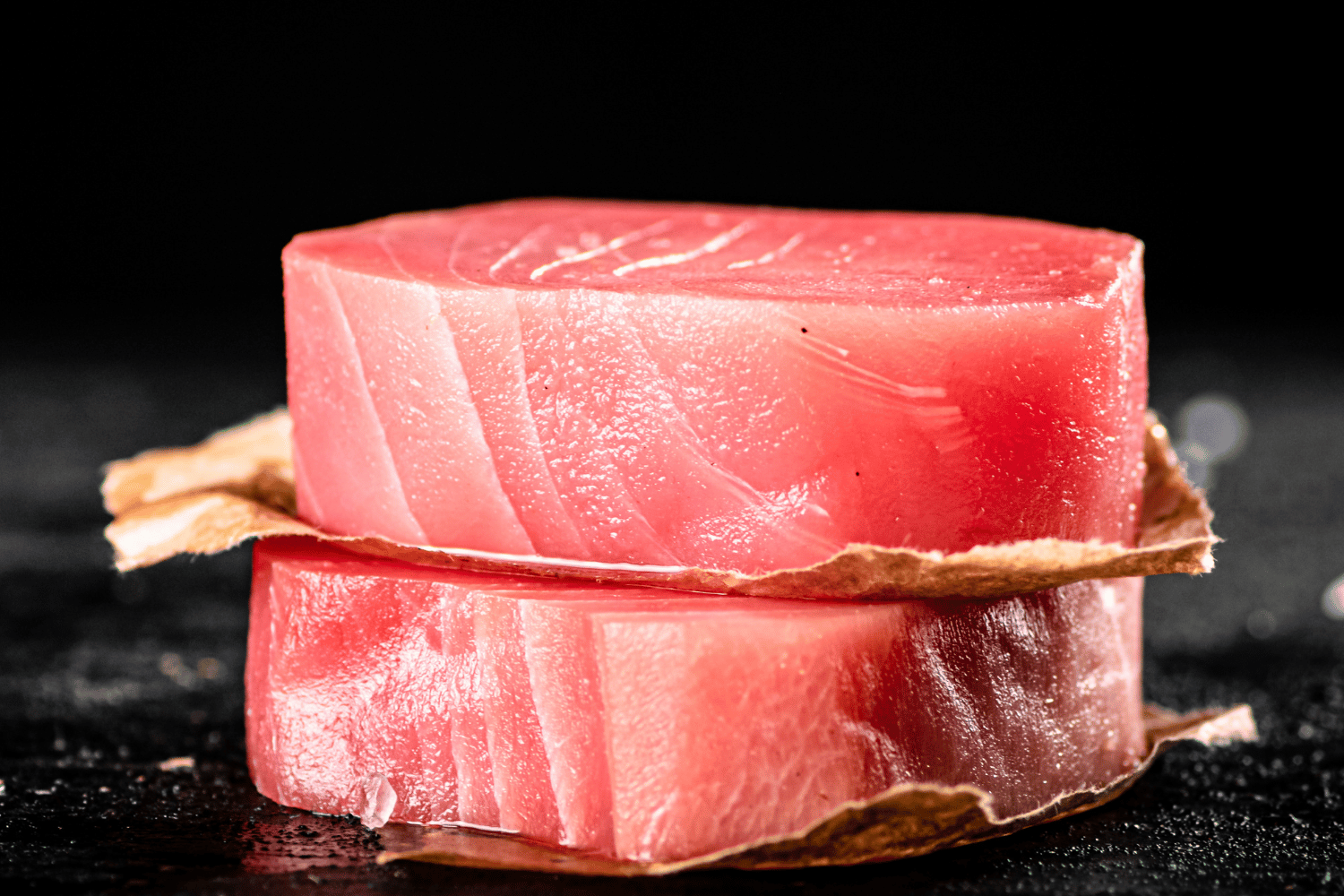

EASTER ORDERS ARE OPEN!
Delivering on Easter Thursday, Good Friday & Easter Saturday
Select your preferred delivery date at checkout



Ah, tuna. The versatile king of the sea, gracing our plates in countless forms, from melt-in-your-mouth sashimi to hearty tuna steaks and flavourful salads. But with so many types of tuna out there, navigating the world of this delicious fish can be a bit daunting. Fear not, intrepid seafood enthusiasts! This blog is your one-stop guide to the most popular tuna varieties, their unique characteristics, and how to choose the perfect one for your next culinary adventure.
Before diving into the specific species, let’s set the stage with fascinating tuna facts. These torpedo-shaped speed demons, alongside mackerels and bonitos, are part of the Scombridae family. They’re incredible athletes, boasting streamlined bodies and powerful tails that propel them through the ocean environments at breakneck speeds. Some tuna species, like the mighty bluefin, can even clock in at over 70 kilometres per hour!

Now, let’s meet the stars of the show! Here are seven of the most popular tuna species found in Australian waters and beyond:

With so many delicious options, choosing the right tuna can feel overwhelming. But worry not! Here are some tips to guide you:

While the seven varieties mentioned above are the most popular in Australia, many other tuna species have unique flavours and characteristics. Here are a few to keep an eye out for:
Remember, exploring different tuna varieties is part of the fun! So don’t be afraid to experiment and find your new favourites.
Tuna are known for their torpedo-shaped bodies, allowing them to slice through the water with incredible speed. Their anal and pectoral fins play a crucial role in maintaining balance. At the same time, their streamlined bodies help them navigate the vast ocean environments.
The tuna industry faces challenges primarily related to fishing pressure and the impact on marine environments. Organisations like the Marine Stewardship Council are vital in ensuring sustainable practices to safeguard these wild animals.

Tuna is not just a culinary staple in Australia; it’s beloved across the globe, with different cultures showcasing its versatility in unique and delicious ways. Let’s embark on a mini culinary tour to explore how tuna is savoured in different corners of the world:
Japan: Tuna is special in Japanese cuisine, most notably in the art of sushi and sashimi. The prized bluefin tuna (known as “maguro” or “hon-maguro”) is often the star of the show, thinly sliced and served raw to highlight its delicate flavour and buttery texture. Bigeye tuna (known as “mebachi”) is also a popular choice for sashimi.
Italy: In Italy, tuna shines in dishes like carpaccio, where it’s thinly sliced and drizzled with olive oil, lemon juice, and capers. Canned tuna is also a pantry staple, often used in salads, pasta dishes, and pizza toppings.
Spain: Spain is famous for its love of canned tuna, particularly in the form of “conservas,” which are high-quality, often hand-packed tuna preserved in olive oil. These gourmet conservas are enjoyed as tapas, appetisers, or even on their own, showcasing the rich flavours of tuna.
Mexico: Tuna tacos are a beloved street food in Mexico, featuring grilled or seared tuna topped with vibrant salsas, creamy avocado, and fresh cilantro. Tuna tostadas and ceviche, a citrus-marinated seafood dish, are popular ways to enjoy tuna’s fresh flavours.
Hawaii: In Hawaii, tuna takes centre stage in poke bowls, a vibrant mix of cubed raw tuna, rice, vegetables, and flavourful sauces. Ahi tuna, a type of yellowfin tuna, is the most common choice for poke, offering a tender texture and mild flavour.
Tuna has been a part of human diets for centuries, dating back to ancient civilisations. Archaeological evidence suggests that tuna was fished and consumed in the Mediterranean as early as 6000 BC. In Japan, tuna has been a prized fish for over a thousand years, with records of tuna fishing dating back to the 8th century.
The popularity of tuna has led to challenges in sustainability, with some tuna stocks facing overfishing and depletion. Choosing tuna that has been caught using sustainable fishing practices is crucial to ensure the long-term health of tuna populations and the marine environment. Here are some key sustainability initiatives to look for:
This quick and flavourful dish showcases the versatility of Yellowfin Tuna. The pan-searing creates a beautiful caramelised crust, while the vibrant lemon-herb sauce adds a zesty touch.
Ingredients:
Instructions:
This Hawaiian-inspired bowl is a refreshing and healthy way to enjoy tuna. The combination of spicy tuna, creamy avocado, crunchy sesame seeds, and fluffy rice is an absolute delight.
Ingredients:
Instructions:
This flavourful salad is a Mediterranean twist on the classic tuna salad. Briny olives, tangy capers, and fresh herbs create flavour in every bite.
Ingredients:
Instructions:
These are just a few delicious ways to enjoy the wide variety of tuna available. So, get creative, explore different flavours and textures, and discover your favourite tuna recipes!

As with any seafood, enjoying tuna is responsible for ensuring its sustainability. Manettas Seafood Market offers tuna caught using responsible fishing practices, such as pole, line, or purse seine with Fish Aggregating Devices (FADs). Choosing Marine Stewardship Council (MSC)-certified tuna is a great way to ensure your seafood journey is as ethical as it is delicious.
So, the next time you reach for a can of tuna or contemplate a tuna steak, remember the incredible diversity of this remarkable fish. From the majestic Bluefin to the humble Skipjack, each type of tuna offers a unique culinary adventure waiting to be explored. So, dive in, discover your favourites, and savour the sea’s bounty!
Now that you’re armed with tuna knowledge let’s tackle some common questions:
You can enjoy delicious tuna while supporting sustainable fishing practices by making informed choices.